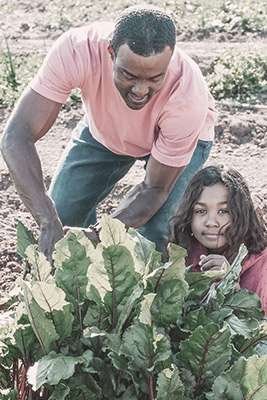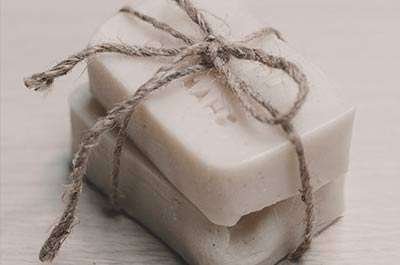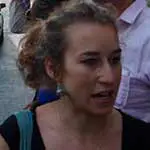It’s never too early to start teaching your child about being environmentally responsible. You can start by showing them how easy it is to make small changes in their everyday routine that will significantly impact the planet. Here are a few tips to get you started.
Show an interest in your child’s ideas.

Don’t lecture your child with an air of authority when you talk about the environment. Instead, ask them questions and show how much you value their opinions. This helps them feel that they have a duty to protect nature, not just because it is their parent’s duty, but because it is their own.
Once you get your kid talking, they may surprise you with some truly inventive ways to help the environment. By showing an interest in their ideas and involving them in sustainability projects, you will encourage them to continue caring for the planet into adulthood.
Be a good role model.
The best way to teach your child about being responsible is to set a good example yourself. When you practice what you preach, your child will start to see how easy it is to be conscious of the environment.
Sustainable behaviors you can try include cycling or walking instead of driving whenever possible, turning off the lights when you leave a room, reusing plastic bags, and giving up single-use plastics such as straws.
By creating a positive example for your child, you will give them a good reason to follow suit and teach others to do the same.
In the end, your example as a parent is what matters. If you show that you care about the environment, they will too.
Praise your child when they do something good for the environment.
Positive reinforcement is something that your child will benefit from now and in the future. Teaching your children about being environmentally responsible can be challenging, but they will be more receptive to your ideas if you make them fun.
By praising your child for recycling or picking up litter in the park, you will encourage them to do good for the environment.
Parents make the common mistake of being tough on their kids when they do something wrong. However, if you offer praise for good behavior, especially in environmental responsibility, you encourage them to continue doing the right thing.
Rewarding good behavior by offering things like money or extra playtime isn’t as effective because it doesn’t teach your child about the importance of protecting the environment. By showing them that you’re happy with their behavior, they will naturally want to continue.
Pick a fun project together to get started.

Doing something as a family makes it more engaging for everyone, including your child. So why not pick a fun project that you can all enjoy together?
Many green projects, such as planting trees or washing the car with biodegradable soap, work best as a group activity because it creates a positive attitude towards green issues. And when you’re all finished, you can take the time to talk about how it went and why these kinds of projects are important.
Another project that’s an excellent idea for family bonding is to take a trip to the beach and collect trash. Picking up litter in your local park or beach can be a great day out for the family, and it also teaches your child about taking care of nature around them.
Talk to them about water conservation.
One of the easiest ways to start young children caring for nature is to talk about water conservation. As plants are made up mostly of water, it’s a good place to start when you want to get kids thinking about environmental issues.
By encouraging them to turn off the tap when they brush their teeth and take shorter showers, they’ll learn to use water more responsibly.
This is an excellent project for you and your child because it’s simple to set up. All you need is a timer in the bathroom, and then every time they are brushing their teeth or showering, they can turn the timer to monitor how long they are using the water.
The idea behind this is to show your child that small changes in water usage can make a big difference. Seeing how long they can go without turning on the tap is a great way for them to learn about conservation and water scarcity.
If your child is interested in natural environments, using water conservation to introduce them to the idea of protecting nature is an excellent idea.
Help your child set up an indoor herb garden.
Growing some herbs indoors can be a fun project for the whole family. It doesn’t take up much space, is relatively low maintenance, and the entire family can enjoy the fruits of their labor.
All you need to do is gather some pots, soil, and seeds. Then let your child spread the soil across the pots, plant the seeds in each pot, water them regularly, and voila, you’ve got your very own indoor herb garden.
You can make it even more fun by letting your child decorate the pots with a bit of paint or some wrapping paper. By allowing them to design the pots, they will have more vested interest in caring for the plants.
Show them how you compost food scraps and other organic materials like paper towels or napkins.

Compost is a great way to reduce the amount of garbage ending up in landfills. And by letting your child see how it works, they are learning how much less trash you can produce when you recycle.
There are many ways to compost, depending on the space available at home, but the basic principles are the same. You collect organic material, usually in a compost bin or bin liner, and wait until it breaks down into nutrient-rich dirt.
This does a great recycling project for children as they can see that what you put into the compost bin eventually becomes something new, which helps them understand how recycling works.
By letting your child see how you dispose of food scraps, they will learn why this is important to the environment. They can even help you sort through your scraps and figure out which ones can be composted.
Remember not to throw anything in the trash that could be used by plants, such as eggshells, banana peels, or coffee grounds. These things can be used in a compost pile and will eventually become food for plants.
Keep an eye out for recycling bins when you’re out and about.
Recycling is one of the simplest ways to get involved in conservation efforts.
All you have to do is put your recyclables into the recycling bin, and that’s it. There are no special skills or equipment you need to have at hand in this process.
However, your child will learn from recycling that when people all put their recyclables together, it can make a big difference.
If you start this habit early enough, your child will continue the good work without you even having to remind them it’s important.
By keeping an eye out for recycling bins when you’re walking around, you can show your child how recycling works and teach them why it’s important.
Help them understand the adverse effects that humans have on the environment.
Children need to understand why it is so important to protect the earth and what kinds of things damage it.
One way to do this is to point out the negative effects humans have on the environment. For example, by cutting down trees for construction material or even for firewood, humans can damage animals’ natural habitats.
Another example is that the pollution created by cars can contaminate water, making it dangerous for fish to live in. This is just one way humans harm the environment, and there are countless others.
To have a sustainable future, humans need to learn from their mistakes and work towards a better, more environmentally friendly future.
Encourage them to know what they are buying and where it comes from.
Kids today are surrounded by advertisements constantly. But this doesn’t mean they can’t be aware of what these ads are selling and where it’s coming from. One way to do this is by having your child start a collection of “use once” or disposable items, like paper plates and cups.

Having your child see how many of these items they use daily will show them what kinds of things we use every day and how much we depend on them. While disposable items are beneficial for convenience, it’s essential to think of the consequences of using them.
They are bad for the environment, which can affect us. When your child sees how much they use disposable items in one day, it will show them that we need to start thinking of ways to save the planet.
As people grow older, they develop their own beliefs and opinions. The best way to get them started is to let them decide what is important to them. You can do this by encouraging them to be aware of the consequences that buying things has on people and the planet.
For example, buy toys made from natural materials instead of plastic, and encourage them to volunteer or give back in some way. As they grow up, they will develop their own opinions about the most important things to care for. The more you can encourage them to make this decision themselves, the more likely they will keep these beliefs towards adulthood.
This helps them develop their own sense of responsibility for taking care of themselves and the environment.
Conclusion.
Thinking of ways to protect the environment is a great way to spend time with your kids. Once you start, you’ll be surprised how easy it is to find fun activities that educate your whole family about the importance of protecting the environment.
By offering praise for good behavior, talking about their ideas, and making it a family project, you’ll be on your way to teaching them sustainable habits that will make a real difference in the future.
What do you think of these tips? Can you give any other sustainable parenting advice? Please let me know in the comments below!

Meet Marcella Raskin: Founder, Editor-in-Chief, and a Maven in Human Potential
Dive into the rich tapestry of Marcella Raskin’s life and you’ll discover more than just an editor-in-chief. At the core, Marcella is a passionate writer, deeply committed to unlocking the boundless human potential. Armed with expertise in Cognitive Behavioral Therapy, Life Purpose Coaching, and Group Life Coaching, she’s carved a niche in helping both women and men unearth their true selves through the art of writing. Every article she pens is a gateway, inviting readers to shift mindsets and embrace transformation, even when change seems impossible.
Beyond her literary pursuits, Marcella is a fitness enthusiast, underpinned by her background in Exercise Physiology. And when she’s not empowering others or delving into the science of movement, she’s reveling in the joys of motherhood, raising two incredible girls, and sharing life’s moments with her beloved spouse.
Trust Marcella’s words; they’re backed by expertise, passion, and a journey full of learning and growth.
Reviewed By: Joanna Perez and Brenda Tillman
Edited By: Lenny Terra
Fact Checked By: Matthew Mansour
Photos Taken or Curated By: Matthew Mansour